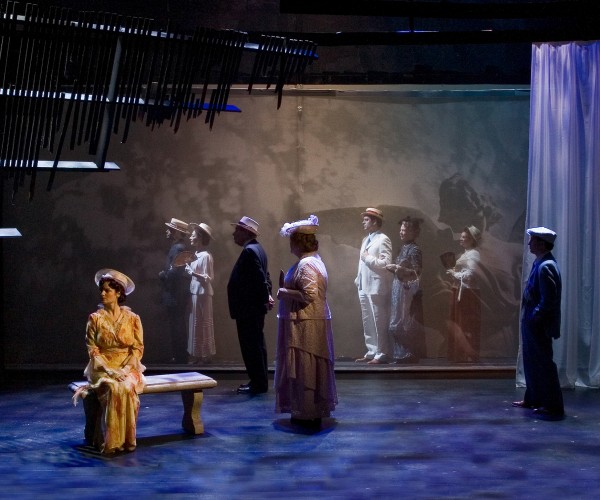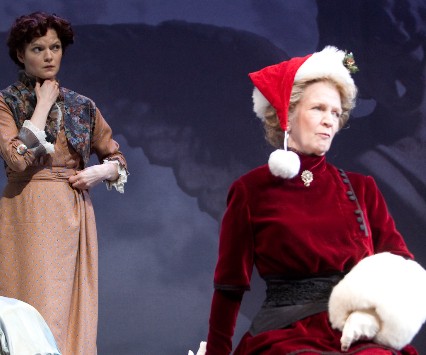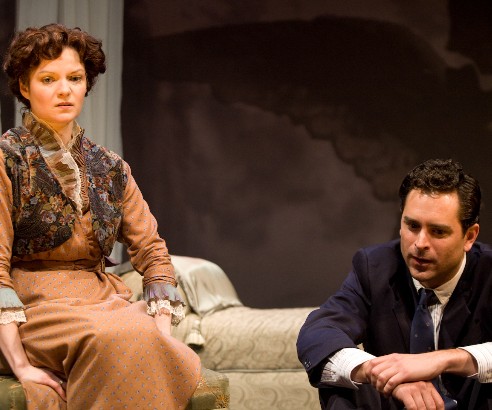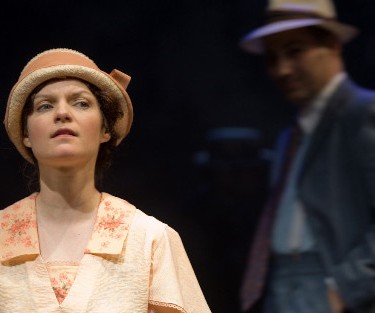Dramaturgy
Tennessee Williams was known for rewriting his work. In fact, it was practically an obsession. Fourteen of his
seventeen full length plays have been published in different versions, some with minor changes and others with
completely different endings or even titles. His close friend Maria Britneva said that Williams “was never satisfied
with anything. He was always sitting down and correcting. He was never happy with what he had done.” One of his
most drastic rewrites was the complete overhaul of his 1947 play Summer and Smoke. The result was so different
from its original that Williams gave the play a new title, The Eccentricities of a Nightingale. Although it was his
preferred version of the play, circumstances prevented the play from being produced until 1975, and the timing could not have been worse for Williams, who was in the midst of a personal and professional downward spiral.
The one constant in every incarnation of Eccentricities is the character of Alma Winemiller. “Alma may well be the best female portrait I have drawn in a play,” Williams wrote. “She simply seemed to exist somewhere in my being and it was no effort to put her to paper.” The Eccentricities of a Nightingale, The Glass Menagerie and A Streetcar Named Desire were what Williams called “a trio” at the heart of which was “a single theme, or legend, that of the delicate, haunted girl, the oversensitive misfit in a world that spins with blind fury.” Williams identified with Alma more than any other character, he said, because “she grew up in the shadow of the rectory and so did I. She is my favorite because she had the greatest struggle, you know?”
Alma’s struggle began in Tennessee Williams’ unpublished short story Bobo (1941), the fantastic tale of a minister’s daughter named Alma who rebels against her Puritan father and becomes a prostitute. She gives birth to a magical child who brings her gold and jewels. Williams rewrote the story as Yellow Bird in 1946. In this version, Alma Tutwiler, the repressed daughter of a fire-and-brimstone preacher, begins drinking, smoking and engaging in prostitution after a yellow bird flies into the window of her parish. In 1946, Williams decided to turn Yellow Bird into a full length play. At the same time he began working on a different play about two sisters in New Orleans, called The Poker Night. Williams found the Yellow Bird play, which he named Chart of Anatomy, increasingly difficult to write. He wrote in his journal: “[The play is] fraught with the most abysmal discouragement: abandoned five or six times, I nevertheless picked it up again each time and went doggedly on with it, and the result is a play that is good enough to impress some people; not myself and not many but some.” He was much happier with the finished script of The Poker Night, which he had renamed A Streetcar Named Desire, although he had no idea what a major success it would become.
Meanwhile, The Chart of Anatomy, renamed Summer and Smoke, was sent to director Margo Jones, who had co-
directed The Glass Menagerie on Broadway. Jones chose Summer and Smoke for the premiere season of her new theater company, Theatre ’47. It starred Katherine Balfour as Alma Winemiller and Tod Andrews as John Buchanan and opened in July of 1947.
The story had changed rather drastically from Williams’ original short story. In Summer and Smoke, Alma Winemiller is shocked when her childhood crush, John Buchanan, returns from medical school with an interest in liquor, loose women and fast cars. The conflict between Alma’s soulfulness and John’s sensuality was at the heart of the play, and Alma’s rebellion in Yellow Bird and Bobo was severely downplayed. A Broadway run was inevitable, although the overwhelming success of A Streetcar Named Desire prompted Williams to hold off on Summer and Smoke’s premiere for more than a year. It finally opened on Broadway on October 6th, 1948 at the Music Box Theatre, but Streetcar was still reigning supreme, in the middle of its 855-performance, two year run. Summer and Smoke, however, ran for a meager 102 performances. Tod Andrews reprised his role as John Buchanan and Margaret Phillips took over as Alma Winemiller. Many critics found the production a disappointment compared to the monumental success of A Streetcar Named Desire. Time magazine wrote: “Summer and Smoke remains only a lucid diagram. [It] has moments of sad sharp insight, but little coherence and intensity as a whole. The reason is partly structural.”
As it turns out, Williams agreed. He revised the script in 1950, removing the prologue, shifting lines from one scene to another, and adding a scene between Alma and John’s father. Then in 1952, while Summer and Smoke was being prepared for an Off-Broadway revival and a West End premiere, Williams began a complete overhaul of the script, which he called a “radical piece of surgery.” Some characters, such as the Gonzaleses, were removed altogether while others, especially the main characters, were altered drastically. John was no longer the wild playboy from Summer and Smoke, but instead a decent young doctor with an overbearing mother. Alma bore a closer resemblance to her rebellious predecessor from Yellow Bird, Alma Tutwiler. The violence of Summer and Smoke, such as the murder of the elder John and the cockfight at the Moonlight Casino, was removed, simplifying and clarifying the plot. When he arrived in London with the revamped version, he was dismayed to find that he was too late. Rehearsals had already begun and his alterations to the script were too extensive for the company to incorporate. He left the revised script with his longtime friend, actress Maria Britneva, and promptly forgot about it.
By 1962, Williams had won two Pulitzers and four New York Drama Critics’ awards and had been nominated for three Tony awards (one win) and two Oscars. But following the death of his lover of fifteen years, Frank Merlo, in 1963, Williams’ addiction to drugs and alcohol became debilitating. A series of major critical and commercial failures followed. Although many modern critics consider Williams’ later work to have been misunderstood or unjustly compared to his earlier work, Williams’ plays of the 1960’s and 70’s were largely dismissed, with one critic going so far as to say “the kindest thing is to assume that Williams died shortly after completing Sweet Bird of Youth [in 1959].”
In the early 1970’s, Williams and Maria Britneva were having a drink together when she handed him the revised manuscript of Summer and Smoke he had given her nearly fifteen years ago. “I am going to put this in your overcoat pocket and I want you to read it tonight if you’re sober enough,” she told him. Williams was so pleased with the manuscript that he read it in one sitting. He began touching up the script immediately.
In 1976, Eccentricities was produced for public television as part of Theater in America. The television production starred Blythe Danner as Alma and Frank Langella as John. John Leonard of The New York Times wrote that Eccentricities “survives because in 1948 the lyric fruit of Williams’ prose had not yet rotted down.” Williams revised the script for the last time shortly after the television premiere. The final script was produced by Neal LeBrock for the Studio Arena Theatre in Buffalo, New York, in 1976. A massive snow storm kept many away, but Broadway and film producer Gloria Hope Sher was brought to the theater in a sled. Sher loved the play so much she decided to produce it on Broadway. It opened at the Morosco Theater on November 23rd, 1976 and starred Betsy Palmer as Alma and David Selby as John Buchanan.
Brendan Gill of The New Yorker called Eccentricities an “ingenious reworking; which actors and actresses will be constantly beseeching producers to put on; what delectable roles it provides.” Alan Rich of New York Magazine called it a “profound improvement! I can only wonder why the inferior first draft has held the boards for so long; some new moments exhale a poetry beyond description.” Variety also preferred I: “It provides a more interesting situation and better theatre.” Most importantly, Williams himself was pleased with the new version, which he called “one of my favorite and most difficult works.”
Despite the mostly positive critical reception, Eccentricities was unable to escape the dark cloud that loomed over Williams’ later career. The show closed after only twenty-four performances. The massive success of Streetcar Named Desire may have stolen the spotlight from Summer and Smoke, but it was the critical and commercial rejection of Williams’ work in the 60’s and 70’s that overshadowed The Eccentricities of a Nightingale. Although Summer and Smoke receives occasional productions (a Broadway revival in 1996 closed after 52 performances), The Eccentricities of a Nightingale, Williams’ preferred version, has not been seen since its original production. TACT is honored to have received special permission from the Williams Estate to present this lost gem to New York for the first time in thirty years.





